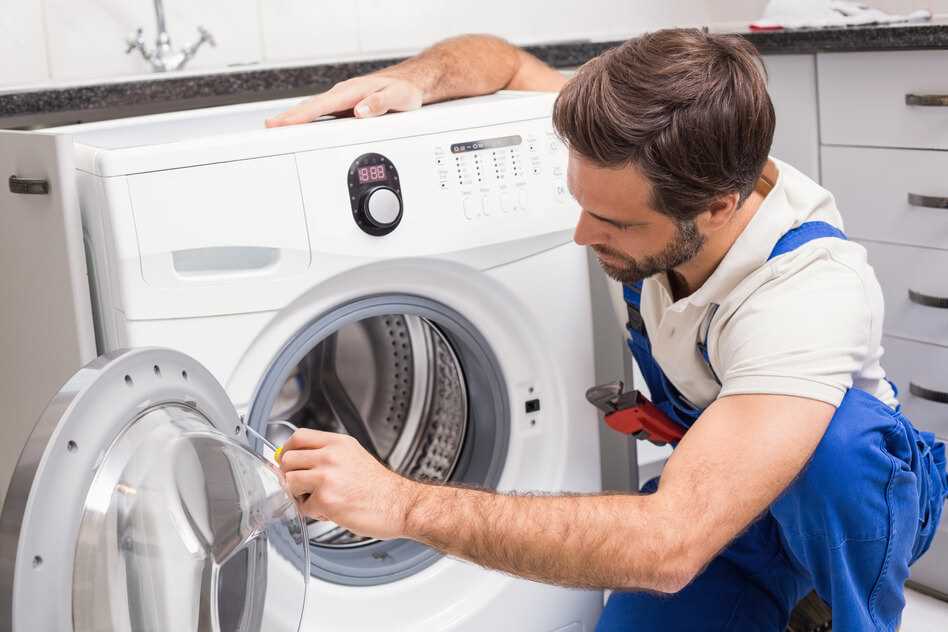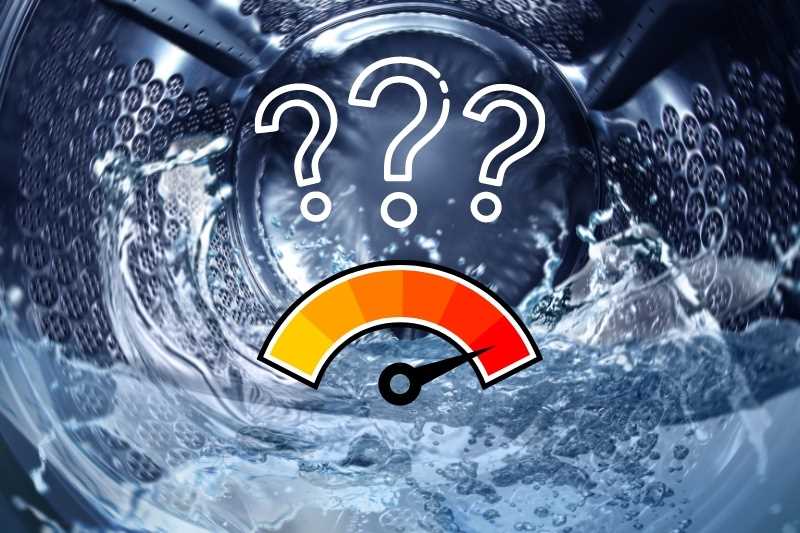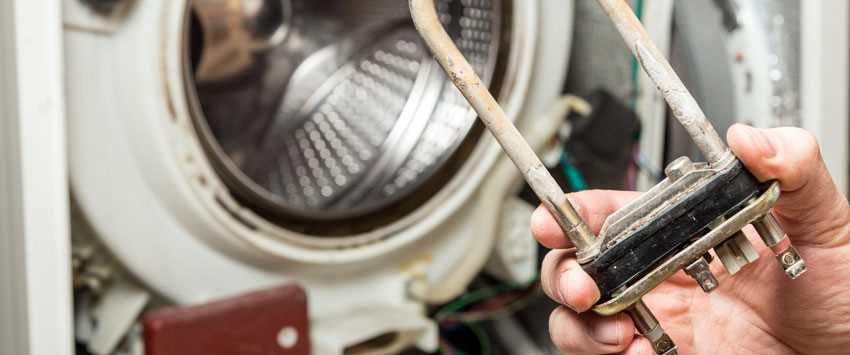




Your washing machine’s ability to heat water is essential for effective and clean laundry. If you suspect that your washing machine isn’t heating water as it should, it’s important to take the necessary steps to troubleshoot the issue. In this step-by-step guide, we will walk you through the process of checking if your washing machine is heating water or not.
Step 1: Gather the necessary tools
Before you start checking if your washing machine is heating water, make sure you have the following tools on hand:
- A multimeter to test the continuity of the heating element.
- A screwdriver to remove the back panel of the washing machine.
- A pair of pliers to disconnect and reconnect electrical connections.
- A flashlight to provide additional lighting inside the machine.
These tools will help you safely and accurately check if your washing machine is heating water. It’s important to gather all the necessary tools before proceeding to the next step.
Step 2: Turn on the washing machine and set it to the hottest temperature

After ensuring that the washing machine is properly plugged in and connected to a power source, you can proceed to turn it on. Locate the power button or switch, and press it to start the machine.
Once the washing machine is powered up, it’s time to set it to the hottest temperature available. Look for the temperature control button or dial, usually located on the control panel of the machine. This button may have options such as “Hot,” “Max,” or a specific temperature in degrees Celsius or Fahrenheit.
Turn the temperature control button or dial to the highest temperature setting. This will instruct the washing machine to heat water to its maximum capability.
Some machines may have additional temperature options, such as “Warm” or “Cold.” It’s best to avoid these settings for this particular test, as they may not accurately indicate whether the machine is heating water or not.
At this point, the washing machine should start heating the water. You may hear the machine making sounds or see lights indicating that it’s heating the water. Refer to the user manual for your specific washing machine model if you’re unsure about the indicators.
Once you’ve set the machine to the hottest temperature and confirmed that it’s heating the water, proceed to the next step to check for the physical presence of hot water.
Step 3: Check the water temperature

Once the washing machine has started filling with water and entered the heating cycle, you can check the water temperature to determine if the machine is heating the water properly. Here are the steps to check the water temperature:
- Let the washing machine run for a few minutes to allow the water to heat up.
- Find a thermometer that can accurately measure water temperature. Make sure the thermometer is clean and sanitized.
- Open the washing machine lid or door, depending on the type of machine you have, and carefully insert the thermometer into the water. Be cautious not to damage any components.
- Leave the thermometer in the water for a few seconds to allow it to get an accurate reading.
- Slowly and carefully remove the thermometer from the water, being cautious not to spill any water or damage the thermometer.
- Check the thermometer reading to determine the water temperature.
If the water temperature matches the selected temperature on the washing machine’s control panel, it means that the machine is heating the water properly. However, if the temperature is significantly lower or higher than the selected temperature, there may be an issue with the heating element or thermostat of the machine.
Step 4: Inspect the heating element

Another possible reason for the washing machine not heating the water could be a faulty heating element. The heating element is responsible for heating the water inside the washing machine during the wash cycle.
To inspect the heating element, follow these steps:
- Unplug the washing machine from the power source.
- Locate the heating element. It is usually located at the bottom of the washing machine, behind a panel or access door.
- Remove any screws or clips holding the panel or access door in place.
- Once the panel or access door is removed, you should be able to see the heating element.
- Visually inspect the heating element for any signs of damage or wear. Look for any cracks, breaks, or discoloration.
- If the heating element appears to be damaged, it will likely need to be replaced.
If the heating element looks fine, you can use a multimeter to test its functionality. Set the multimeter to the resistance (ohms) mode and touch the multimeter leads to the terminals of the heating element. A reading of zero or near zero resistance indicates that the heating element is functioning properly. If the multimeter shows no resistance or a very high resistance, it means the heating element is faulty and needs to be replaced.
Remember to consult the washing machine’s user manual or contact a professional if you are not confident in performing these steps yourself.
Step 5: Call a professional if the water is not heating
If you have followed all the previous steps and the water in your washing machine is still not heating, it is recommended to call a professional technician to diagnose and fix the issue. There could be a number of reasons why your washing machine is not heating the water, and it can be challenging to identify the exact cause without proper expertise and tools.
A professional technician will have the necessary knowledge and experience to troubleshoot the heating element, thermostat, or any other components that may be responsible for the problem. They will be able to accurately diagnose the issue and provide a solution to get your washing machine back to its normal functioning.
When calling a professional, it’s important to provide them with as much information as possible about the problem and any observations you have made. This can help them in determining the possible causes and ensure they come prepared with the necessary tools and parts for repair.
Keep in mind that attempting to troubleshoot or repair the heating element yourself may void your warranty or cause further damage to your washing machine. It is always best to leave complex repairs to trained professionals who have the skills and expertise to handle the job safely and effectively.
Additionally, hiring a professional can save you time and frustration, as they will be able to quickly identify and fix the issue, helping you avoid extended periods without a functioning washing machine.
In conclusion, if the water in your washing machine is not heating despite your attempts to troubleshoot the problem, it’s time to call a professional technician. They will be able to diagnose and fix the issue and ensure your washing machine is functioning properly once again.
FAQ
What should I do if my washing machine is not heating the water?
If your washing machine is not heating the water, there are a few things you can check. First, make sure that the hot water supply is turned on and working properly. You can test this by running hot water from the tap in your kitchen or bathroom. If you have hot water coming from the tap, but not in the washing machine, there may be an issue with the inlet valve. You can also check the heating element inside the washing machine. It is located at the back of the drum and can be accessed by removing the back panel. If the heating element is damaged or faulty, it may need to be replaced. If you’re not comfortable doing this yourself, it’s best to call a professional for help.
Why is it important for a washing machine to heat water?
Heating water is important for a washing machine because hot water can clean clothes more effectively than cold water. Hot water helps to dissolve detergent and remove stains and dirt more easily. It can also kill bacteria and germs that may be present in the laundry. Additionally, hot water can help to remove odours and leave clothes smelling fresh. Overall, heating water in a washing machine ensures better cleaning performance and hygiene.
Can a faulty heating element be repaired or does it need to be replaced?
If the heating element in your washing machine is faulty, it will likely need to be replaced. Repairing a heating element can be difficult and may not provide a long-term solution. It is best to replace the heating element with a new one to ensure proper functioning of the machine. To replace the heating element, you will need to disconnect the power supply, remove the back panel of the washing machine, locate the heating element, and disconnect the wires connected to it. Then, you can install the new heating element and reconnect the wires. If you’re unsure or uncomfortable with this process, it’s best to seek professional help.
Is it normal for a washing machine’s water temperature to fluctuate during a cycle?
It is normal for a washing machine’s water temperature to fluctuate slightly during a cycle. This is because the machine adjusts the temperature based on the selected wash program and the needs of the laundry. The machine may use a combination of hot and cold water to maintain the desired temperature. However, if you notice significant and frequent fluctuations in water temperature, it may be a sign of a problem, such as a faulty thermostat or heating element. In such cases, it is best to have the machine checked and repaired by a professional.













